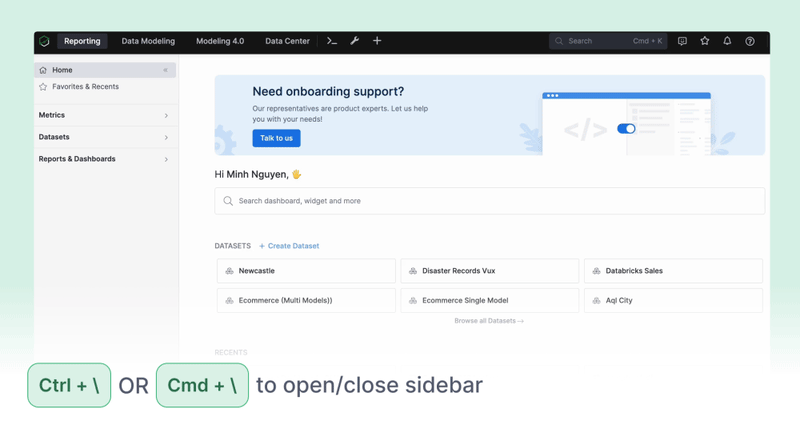🤖 All-New Holistics CLI: Developer-Friendly & More Powerful!
We're thrilled to announce our completely redesigned Command Line Interface (CLI) tool, built from the ground up to streamline your analytics development experience.
Why A New CLI?
Our previous CLI had limitations that slowed down your workflow:
- Complex installation process dependent on Ruby
- Limited validation capabilities between dbt and Holistics
- Insufficient tools for analyzing dependencies
- Slow feature deployment cycle
What's New?
🎯 Zero-Dependency Installation�
One command, and you're ready to go:
curl -fsSL https://raw.githubusercontent.com/holistics/holistics-cli/refs/heads/master/install.sh | bash
💪 Powerful Features Out of the Box
- AML Compilation: Instantly compile and validate your AML files
- dbt Integration: Seamlessly upload and manage your dbt models
- Repository Validation: Catch errors before they reach production
- Multi-Platform Support: Works on macOS, Linux, and Windows
⚡ Enhanced Developer Experience
- Self-Contained Binary: No external dependencies required
- CI/CD Ready: Perfect for automation in your development pipeline
- Rapid Updates: New features and improvements delivered faster than ever
What's Next?
This is just the beginning! Our new CLI architecture allows us to ship new features and improvements much faster. We can we improve further:
- Enhanced validation capabilities
- Dependencies/Lineage analysis
- More automation tools for your workflow
Getting Started
Check out our CLI documentation to start supercharging your analytics workflow today!



